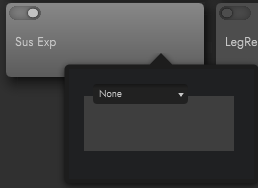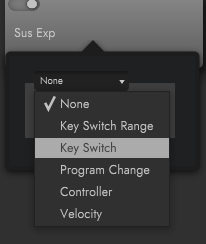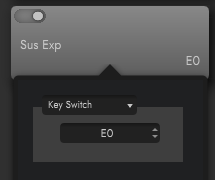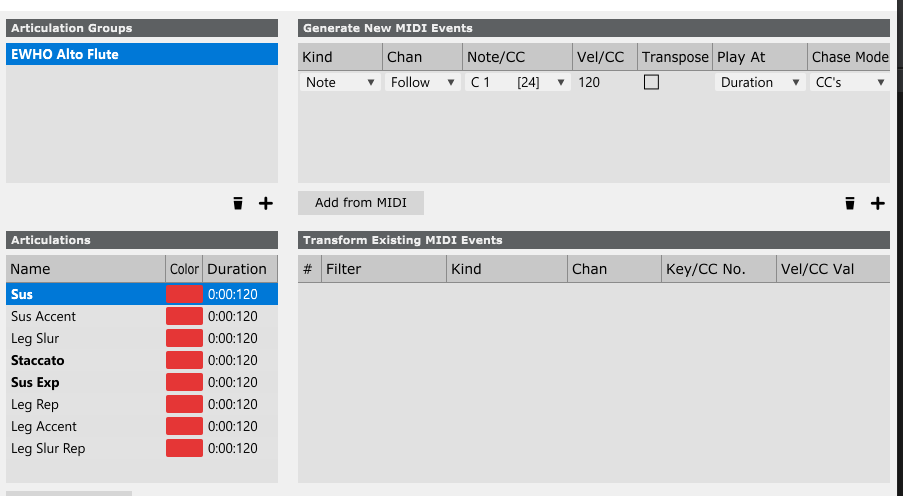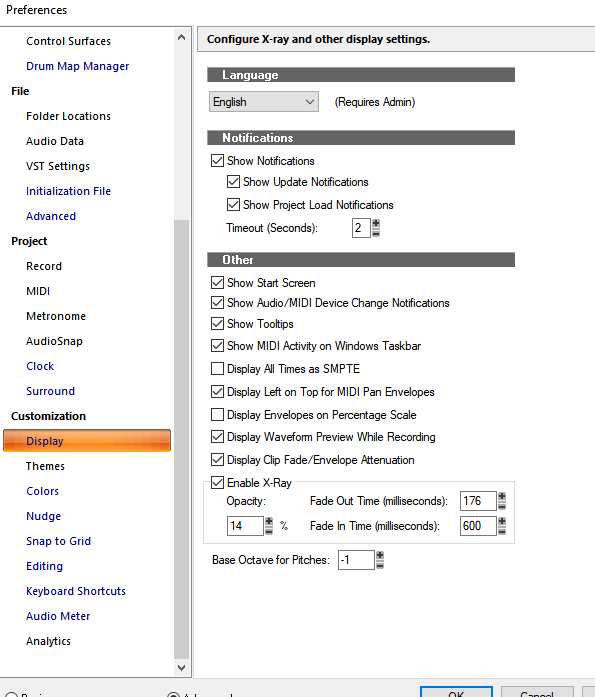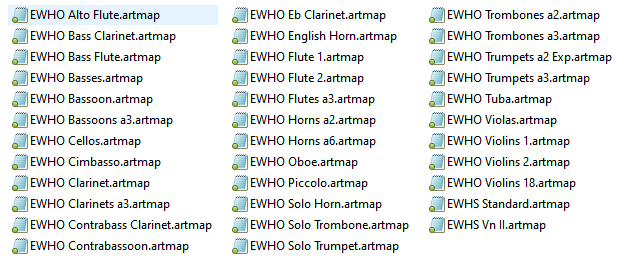-
Posts
242 -
Joined
-
Last visited
-
Days Won
1
Everything posted by Steve Harder
-
The original creator and sharer of these is "ALittleNightMusic" on https://vi-control.net/community/members/alittlenightmusic.24110/ They did all the hard work. All I did was import the Cubase expression maps and then saved in Cakewalk. These are a good jump start on using Opus master keyswitch articulations. Be aware that master keyswitch instruments consume large amounts of ram (especially Diamond) in Opus, so that may be a reason to use individual articulation instruments rather than master keyswitch instruments. Or to be selective in which articulations you allow Opus to load in a keyswitch instrument. Opus is much more flexible with this than Play was. Using the "Don't Preload" option can really help keep ram usage low, only notes played will be loaded. Here's typical contents Note the disparity between the Note value in Cakewalk artic editor of note C1 and Opus Note of C0 (see 3rd screenshot below). This is caused by Cakewalk and Opus assigning different values to Bass Octave. I have mine set to -1 (at bottom on 1st screenshot below). (This is something to check out if an artic map you create doesn't function, try an octave up or down for the note value.) These use the Master keyswitch patch. ---- On first loading keyswitch patch may have some articulations turned off. --- You manually turn them on by clicking the little slider switch at upper left of each articulation you want to use. To save ram you might only want a few articulations turned on. --- Then you assign a keyswitch to the articulations you turned on manually. You right click in the articulation box. You click on the None dropdown and select Key Switch. And Opus assigns the next keyswitch in order to that articulation. --- Do this for any/all turned off articulations you want to use. To save ram you might only want a few articulations turned on. The changes you make will be saved with your project. If you want this setup to be your new standard for this articulation then you would save the changes to the instrument in Opus. EW Hollywood Opus.zip
-
And there is another Opus version coming to fix white noise issue for CCX.
-

EW Opus Orchestrator - capture midi into Cakewalk
Steve Harder posted a topic in Cakewalk by BandLab
As far as I can tell, after just a couple of hours with Orchestrator, there is not a drag/drop export midi capability currently. But Opus does export midi. To capture midi. Play or draw midi on the Opus instrument track. Then you Insert a Midi track, select Opus Midi Omni as input, select Record on the inserted midi track, and record the output of the Opus track. Orchestrator may use up to 16 channels. So you select all the notes in the newly recorded midi track. Then you use Split Channel to Tracks.cal to create a track for each channel. Another approach would be inserting multiple midi tracks and set input of each to Opus Midi Ch 1,2,3. But that's really more work than use midi omni and Split Ch to Tr.cal and then deleting tracks that are empty. Early days yet and others may find easier approaches. But at least capture of midi created by Orchestrator is possible. I don't have an opinion on the long term usability of Orchestrator but is has some interesting capabilities. It appears to be a unique take on combining a very capable arpeggiator with management of samples. It may be easiest to just treat Orchestrator as a black box instrument that you play simple chords into. But capturing the midi of interesting results may be worth the effort for educational purposes. Fwiw -

Clicking with mouse Articlations don't changes
Steve Harder replied to Jordi's topic in Cakewalk by BandLab
If problem persists try in articulation editor change Chase Mode to Note or Full. set velocity to non zero value In artic lane draw articulation across entire area that you want that artic to affect. -

Clicking with mouse Articlations don't changes
Steve Harder replied to Jordi's topic in Cakewalk by BandLab
What sample library are you using? -
Rogério I just put 2 and 2 together and discovered you are the author of HumanizePlus cal. Can you point me towards resources that will help me understand the basics of Cal? I am fluent in several programming languages, I've wanted to jump into Cal and I now have a couple of specific tasks that I'd like to accomplish with Cal. I'd like emulate a couple of the functions in Cubase Logical Editor that I can't find existing Cal files for.
-
And as you work with artic maps for other sample libraries you will find that the "most essential thing" can be different. Your find of extending "everywhere it belongs" is needed by your current sample library. But I use little blips of artic maps in other libraries like VSL Synchron and they work fine. So you do end up creating slightly different work habits for each sample library. But at the end of the day artic maps are great for navigating complicated libraries and for documenting what you have done. Here's a project using VSL BBO Eridonus which has lots of riffs and effects. I would go nuts returning to this project after a couple of months if I didn't have all the artic maps to document what was going on.
-
Try setting the velocity of the articulation notes in your Chase Mode Notes to something other than 0. In the latest version of Cakewalk, that I'm using, the velocity of notes you add defaults to 100. Might be worthwhile to update Cakewalk if you are not on latest version. Some sample library instruments will interpret a note with velocity 0 as "Note Off".
-

kilohearts carve eq free with Computer Music Mag
Steve Harder replied to Paul_in_wales's topic in Deals
Fwiw In US many public libraries use Libby to provide magazines to members. My library offers Computer Music along with 2k other magazines. May be worth checking yours and getting card. -
Try switching Chase Mode to Note. And if that doesn't work try Chase Mode to Full. Reply if still not working and we'll talk more. Each library may behave differently but articulation maps are really helpful once set up. Once you get a couple of artics working it's easy to copy and create larger maps. And look thru threads in the artic maps contents section. https://discuss.cakewalk.com/index.php?/forum/37-articulation-maps-new/
-
-

Help with Midi Controller (Nektar LX61+) required ;(
Steve Harder replied to Sebastian's topic in Cakewalk by BandLab
That is frustrating. Over the long haul Nektar does an excellent job of integration with Daws but issues crop up. One thing to keep in mind is Lx61 uses 2 midi streams to talk with Cakewalk. One is the usual music stuff and the other is transport and mixing control. Worst case, reset Lx61 to factory preset and reinstall the Nektar Cakewalk package. Good luck. -
Here's a short vid demonstrating one task that chord track could help with.
-

Cakewalk needs a Humanize feature in the PRV
Steve Harder replied to Arabic Dude's topic in Feedback Loop
Please give us more info. I had read about Studioware and had decided I didn't have the tools needed to create panels. -
And also excellent 2nd video on editing CC data.
-

Distribute Midi Notes Evenly Across Selected
Steve Harder replied to Scott Kendrick's topic in Cakewalk by BandLab
Read up on the stretch tool. I use it when I step record ostinato as 1/4 notes and then reduce them to fit whatever slot I want. -
I'm going to use this posting as the most up to date source for my articulation maps. If you are creating your own maps it's worth reading some of my other threads in this content section for detailed info. My normal workflow is to use Synchron player interface to audition articulations and then assign appropriate artic from map. My strategy for artic map layout is to mimic the layout of the Synchron player menu as this makes finding correct artic easy while looking at Synchron player. VSL Synchron Brass zip VSL BigBangOrch zip which includes Andromeda w Cor Sordino, Black Eye w Con Sordino, Capricorn, Eridonus, Free Basics, Hercules, Jupiter, Kopernikus, Lyra, Musca, Orion, Phoenix, Solarus, Tana thru Zenia. VSL SynchronStringsPro zip VSL BigBangOrch by Harder.zip VSL Synchron Strings Pro by Harder.zipVSL Synchron Brass by Harder.zip
-
VSL Synchron player expects the multiple keyswitches it uses to arrive in a specific order. To make that happen consistently in Cakewalk artic maps for Synchron you should set Chase to FULL for all. This will get fixed in future update of Cakewalk, but the fix is complicated and I've seen no issues using FULL for now.
-

Backing Tracks CWP files just for you.
Steve Harder replied to John Vere's topic in Cakewalk by BandLab
Quick note for new users of OneDrive, you can select multiple files by lassoing and they will be zipped for download. -
I've been using the free https://epiconlineorchestra.com/ since it was created last year. " a little online sample player instrument which lets you check out different chord progressions and have them played with orchestra samples - right in your web browser " I searched before posting here, no results, so thought it was worth a mention.
-
There are some solid general use instruments and some quirky, unique, single purpose. I've liked most and found a use for some. Free, so not much risk involved.





